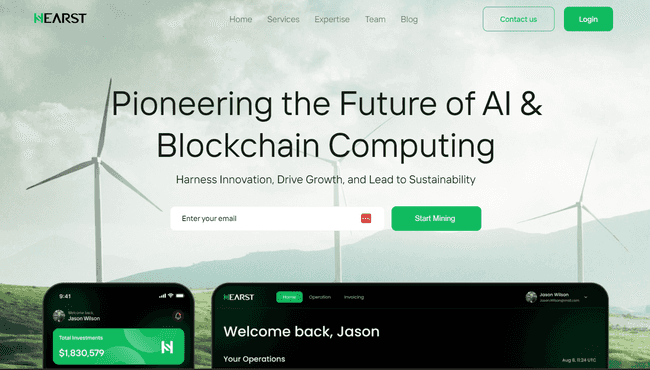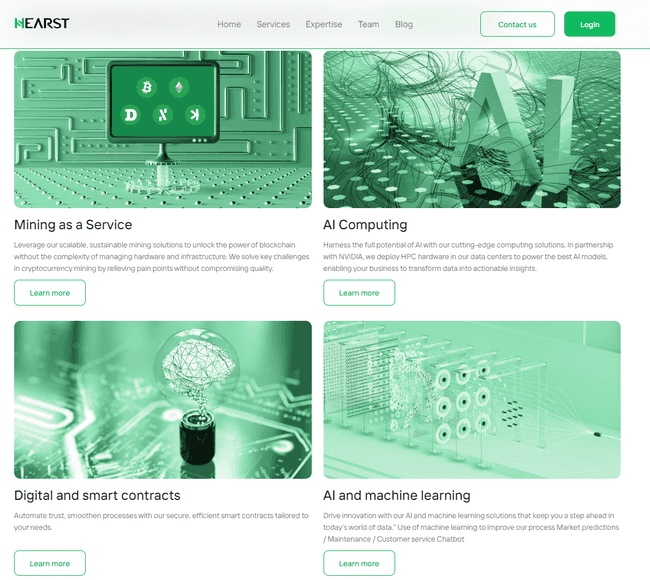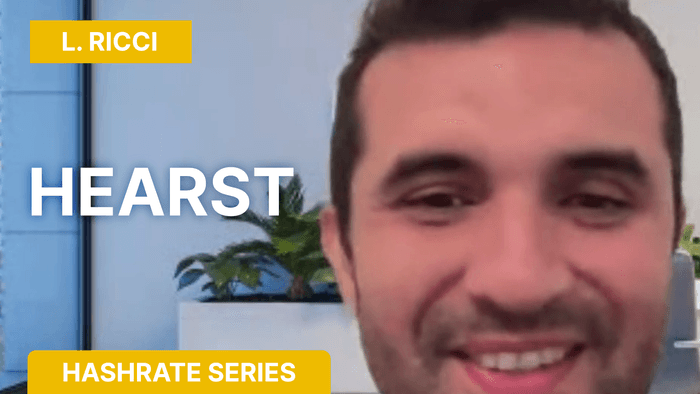The blockchain hashrate is directly correlated with network security. As a Proof-of-work blockchain, Alephium relies on active ecosystem actors to sustain and improve Alephium’s reliability. This series is about them, and after Nicehash, Goldshell, Cryptohall24, and ICERIVER, please welcome Hearst.
Here, Loic shares his crypto journey and how Hearst came to be. The full video interview is available here.
If you prefer reading, the full (slightly edited) transcript is below.
Hi, Loic! You’ve been part of the Alephium community for a while now, but not everyone knows you yet. Can you tell us a bit about yourself and how you got into the crypto world?
Loic: Thank you, Vlad, for having me here. It’s great to have the opportunity to talk a bit about what we do. So, I’m French, as you might be able to tell from my accent. I come from a family of entrepreneurs. My parents run a family business, and I followed a technical path, becoming a mechanical engineer. I worked in the space industry for about five years, mostly in telecommunications, before deciding I wanted to transition into computing.
It was 2013, and tech companies were booming, so I jumped in, starting an e-commerce company with a friend. However, I felt far from the technology side, so I went back to school, got an MBA in data science, and did a specialization in Paris. That’s how I got deeply involved in computing and data science, which led me to where I am today.
It’s a fascinating journey. You and your co-founder, Adrien, eventually created Hearst. Can you introduce us to Adrien and share a bit about how you two came together to launch Hearst?
Loic: Sure. Adrien is a long-time friend, and we’ve known each other for over 15 years. He started his career in finance, building a forex fund in Luxembourg before moving into crypto. Adrian was well-connected in the crypto space and began mining Ethereum and Bitcoin early on. We reconnected around that time, and with my background in innovation and his expertise in mining, we decided to build something together. That’s how Hearst was born — combining my knowledge of innovation with Adrien’s mining experience to explore new opportunities in the blockchain space.
So, Hearst was built on this combination of innovation and mining expertise. Can you give us an overview of what Hearst is doing today?
Loic: At Hearst, our core focus is on innovation in blockchain computing, specifically in proof-of-work mining and AI computing. Our flagship service is “Mining as a Service.” We provide institutional clients like banks, funds, and centralized exchanges with access to mining hardware, which we manage in premium hosting facilities.
The concept behind this is that mining can consistently create value, provided that key factors such as electricity costs, hardware prices, and uptime are optimized. We take care of those complexities for our clients, offering a transparent and efficient solution. We’re also working on green mining initiatives, exploring sustainable energy sources like solar, biogas, and more to make the mining process more environmentally friendly.

Green mining is a hot topic right now. Can you expand on Hearst’s efforts toward sustainability in mining?
Loic: Absolutely. Mining is inherently tied to energy consumption, and we believe in leveraging green energy wherever possible. For example, we’re working on proof-of-concept projects using solar energy paired with battery storage, and we’re exploring biogas options to minimize our environmental impact. This isn’t just about greenwashing — we’re aiming for tangible, sustainable solutions that make a real difference.
We’re currently in the process of fundraising to launch our first proof-of-concept project, where we’ll demonstrate how biomass can be turned into energy to power mining operations. We want investors and the community to see this in action and understand how mining can be more sustainable.
Alephium has sustainability embedded in its DNA through its Proof of Less Work (PoLW). How did you discover Alephium, and what made you decide to get involved in the community?
Loic: We first got in touch with Alephium through a client of ours, Swissborg, who connected us with the Alephium Foundation. From the beginning, I was impressed by the technology and innovation behind Alephium. The BlockFlow sharding and the efficiency of the Blake3 algorithm really set it apart.
But beyond the technology, the people in the Alephium community are amazing — incredibly professional, and there’s a great vibe. Everything just clicks, and it feels like the right place for us to be, both in terms of the tech and the community spirit.
Since Alephium moved into ASIC mining, how has that affected the landscape of mining from your perspective?
Loic: The arrival of ASIC miners on Alephium is a huge milestone. It signals that the chain is maturing and attracting more serious participants. With ASICs, we’ve seen a rapid increase in hashrate, and I expect that growth to continue exponentially. We’ve embraced this shift at Hearst, offering our customers access to these more powerful machines.
Of course, with ASICs coming into the mix, GPU miners are becoming obsolete, which is part of the natural evolution. But for Alephium, this means stronger security and more interest from institutional players. I predict that in 18 months, we could see Alephium’s hashrate reach several hundred petahashes.
You mentioned innovation and AI computing earlier. Can you tell us more about how Hearst is integrating AI into its operations?
Loic: AI is a major part of what we do at Hearst. We’re using machine learning to enhance our mining operations, from market predictions to predictive maintenance. For example, we use machine learning models to anticipate when equipment might need repairs, ensuring that our clients’ hardware runs smoothly and efficiently. We’re also developing tools like chatbots powered by LLMs to make interacting with our systems more intuitive for clients.
Additionally, we’re exploring how AI can be used in blockchain itself, working on solutions that marry the two technologies to create new opportunities. There’s a lot of potential there, and we’re excited to see where it goes.
What’s next for Hearst? What should the community look forward to?
Loic: We have some very exciting news coming soon regarding our work with Alephium, but I can’t share too much just yet. Let’s just say it’s going to be a game-changer for Alephium mining, and we’re preparing something big. Stay tuned!
On the broader Hearst side, we’re focused on scaling our Mining as a Service offering, expanding our team, and pushing forward with our green mining initiatives. We’re also continuing to innovate in the AI space and working on raising funds to grow our infrastructure and capabilities.

Anything else you’d like to share with the community before we wrap up?
Loic: I just want to say that I’m really excited about where Alephium and Hearst are headed. We’ve got big plans, and we’re always looking for new ways to contribute to the ecosystem. I encourage everyone to follow along with our journey on Twitter or LinkedIn, and feel free to reach out if you have any questions or ideas!
Twitter & other social links: https://x.com/Hearst_io
Website: https://hearstcorporation.io/
Loic was a speaker at the Athens Builders Meetup!
That is the end of this interview! If you are interested or have extra questions, you are welcome to reach out on our Discord, or in the Alephium Telegram channel. Don’t forget to follow @alephium on Twitter to stay up-to-date.
